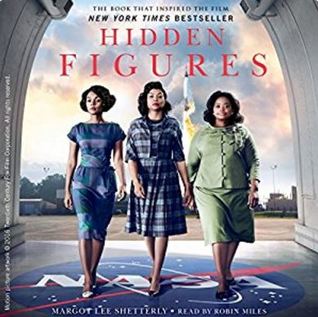Today I'm looking at Hidden Figures, a book you may remember coming out way back in 2016. I was recently able to borrow it from the library and because I had heard good things I decided it was worth reading about. Hidden Figures talks about the history of the black female computers who worked first for the aeronautical research laboratories at Langley Field and later for NASA during the height of the space race. These women, who literally did nothing but math for a living, have been overlooked in official and even unofficial histories of NASA. Shetterly began investigations because her father was a black engineer for NASA and knew many of the computers who lived in their neighborhood. As she continued her research Shetterly discovered that at least fifty black women worked for the Langley aeronautical research labs and/or NASA, and it's possibly a much greater number. This is to say nothing of the white women who worked in the exact same jobs but have gotten only slightly more recognition. Even Shetterly admits that her book only scratches the surface of the history of NASA's black women computers, but it's an important first step so further research can be done.
Today when we hear computer we think immediately of an inanimate object so ubiquitous it hardly bears thinking about. I am writing this blog post on a computer. You are reading it on a different computer. You probably use a computer at work, and so do I. But seventy years ago electronic computers were little better than theory, and complex mathematics had to be done at best with the aid of slide rules and mechanical adding machines. Because this was seen as drudge work, scientists and engineers were happy to pass the difficult task of actually doing the math to female computers.
During World War II, America's quest for air supremacy meant that massive amounts of money were spent on the research and development of new and better airplanes, and the aeronautic studies required massive amounts of calculations. Whether it was refining the SBD Dauntless, speeding up the P-51 Mustang, or getting a little more lift from the B-29, thousands of calculations had to be done to ensure American planes would win the war. But due to wartime shortages in labor, the War Department was looking for anyone with mathematical aptitude to work for their research labs. Thanks to this and an executive order from FDR prohibiting racial discrimination for federal jobs, an entire new set of opportunities were open not only to African-Americans in general, but specifically African-American women. Although they had to struggle with segregation within the laboratories, the black computers confined to a separate computing pool and relegated to a single table in the cafeteria, the ladies of Computing West were undeterred by their circumstances and gave it their all. And like many of their white counterparts, these female computers managed to earn the respect and admiration of their white male colleagues.
Perhaps most astoundingly, what was supposed to be a temporary war-time job, soon developed into a career for many of these women as the arms race and space race of the Cold War continued to feed demand for mathematical know-how. Some women even went on to learn how to program and operate the electronic computers that began replacing the biological kinds in the 1960's.
It is not overall surprising that black women have been overlooked by more traditional histories. Non-whites and women have had a hard time going beyond more than mere token status. But I think this book is an important step into revealing the complex nature of NASA even in the 1950's and 60's and how women of color have been involved since the beginning. As I said, hopefully more research will follow on Shetterly's book and we can learn more about the computers of NASA.
- Kalpar


No comments:
Post a Comment